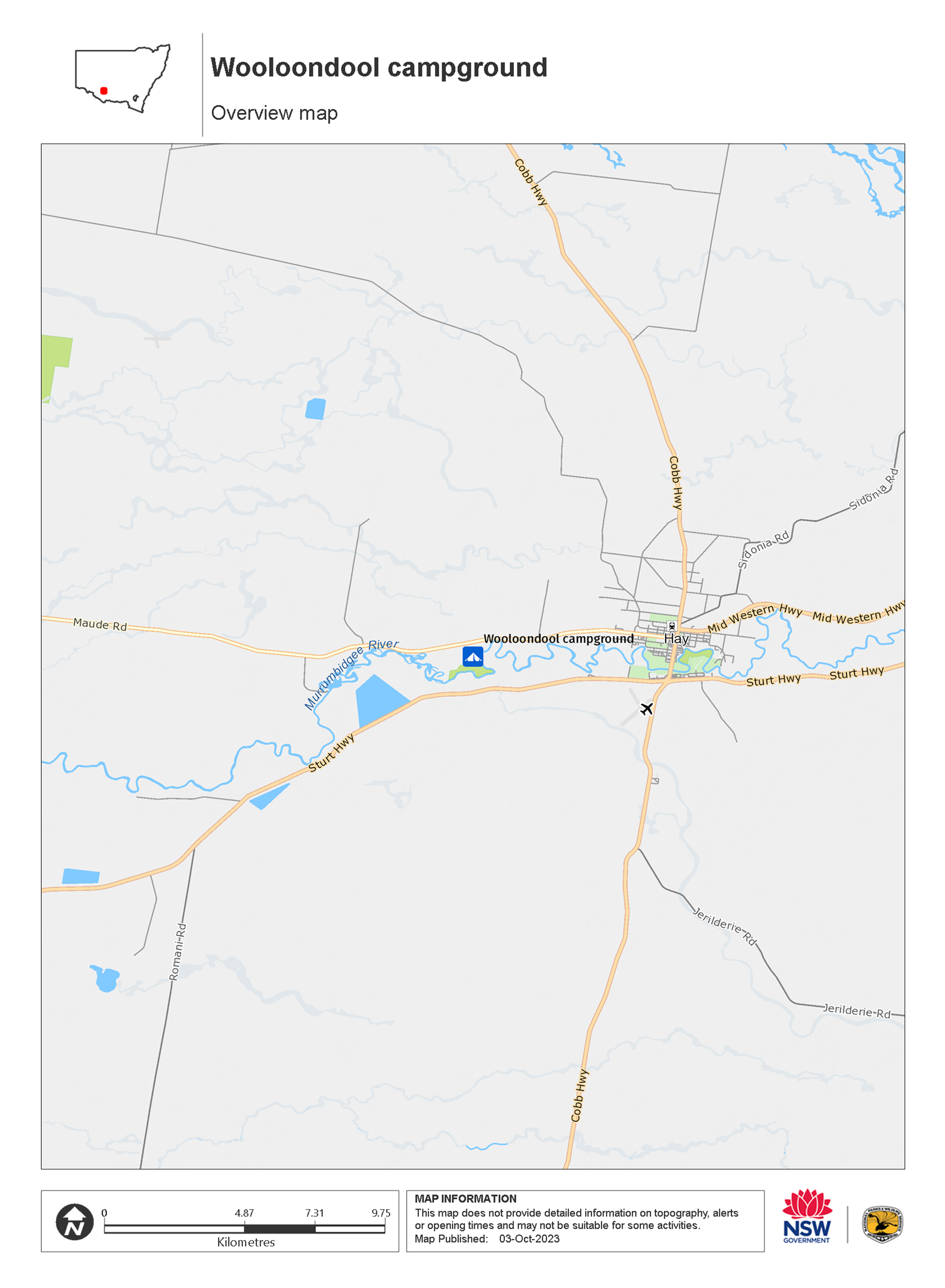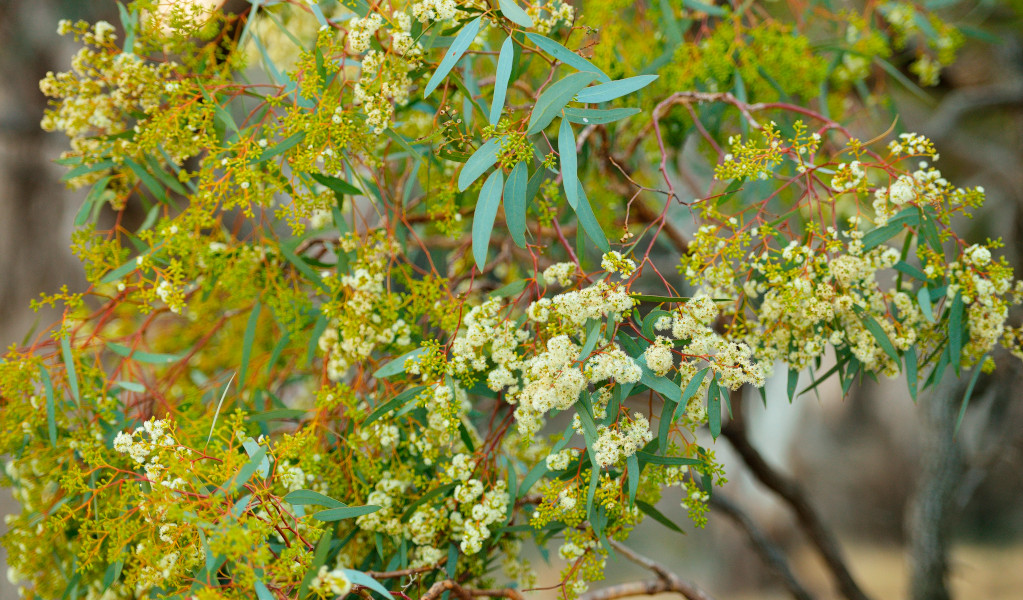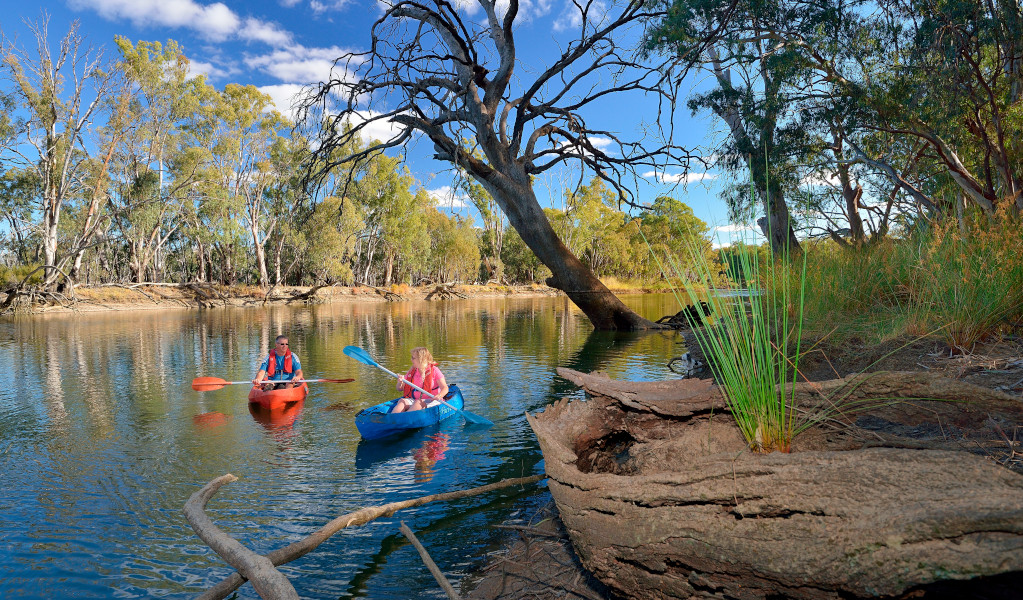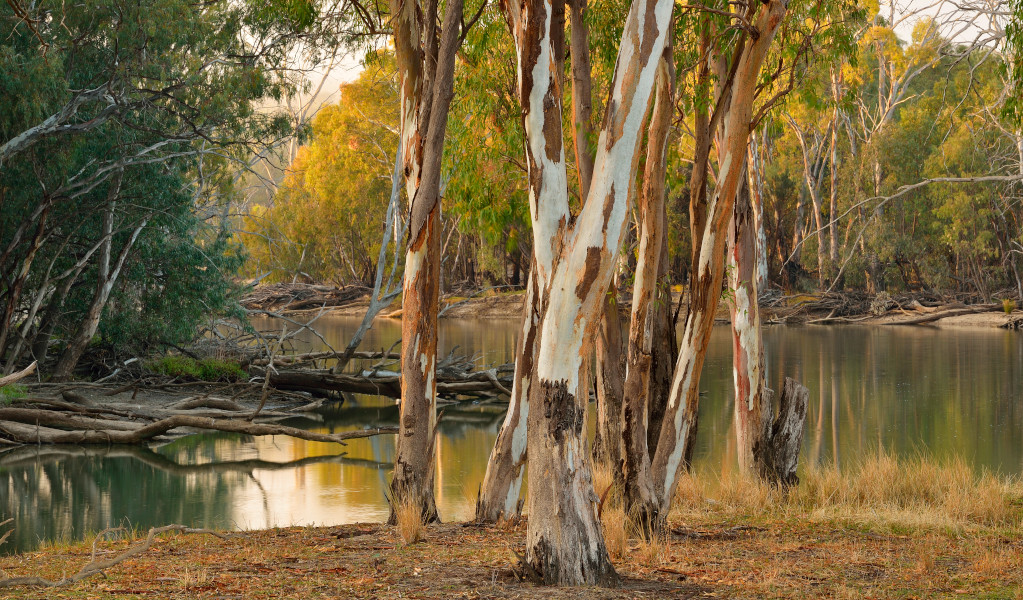Wooloondool campground
Murrumbidgee Valley Regional Park
Overview
Wooloondool campground is in Murrumbidgee Valley Regional Park near the town of Hay. This dog-friendly location is ideal for camping, fishing, birdwatching, canoeing, swimming alongside the Murrumbidgee River.
| Camping type | Tent, Camper trailer site, Caravan site, Camping beside my vehicle |
|---|---|
| Facilities | Boat ramp |
| What to bring | Drinking water, cooking water, firewood, fuel stove |
| Price | There are no camping fees at this campground but a $6 booking fee applies. |
| Bookings | Bookings for up to 2 sites and 12 people can be made online. |
| Group bookings | This campground is not suitable for group bookings. |
| Please note |
|
Camp by the river at Wooloondool campground within Murrumbidgee Valley Regional Park, nearby the town of Hay. Many set up camp at Wooloondool campground as it’s a great place for fishing. You might be lucky to catch some yellowbelly, redfin, brim, catfish, and carp, as well as crayfish during the season. Lions Fishing Tournament is held every February, part of which is at Wooloondool campground.
If fishing doesn’t float your boat, take the dog for an easy walk along the riverbank to secluded swimming and picnicking areas. It’s also a great place to launch a kayak or canoe and explore the park through its picturesque waterways.
Wooloondool campground offers camping spots for caravans, campers, and tents, within groves of black box trees. River red gums line the nearby Murrumbidgee River, providing habitat for ring-tailed possums, wallabies, kangaroos and wombats. You’re likely to see these at dawn and dusk, whilst tawny frog mouths live and hunt in this area at night.
Map

Map legend

Local alerts
For the latest updates on fires, closures and other alerts in this area, see https://uat.nswparks.cloud/camping-and-accommodation/campgrounds/wooloondool-campground/local-alerts
Bookings
- National Parks Contact Centre
- 7am to 7pm daily
- 1300 072 757 (13000 PARKS) for the cost of a local call within Australia excluding mobiles
- parks.info@environment.nsw.gov.au
Operated by
- Moama office
- Monday to Friday, 9am to 4pm. Closed 12pm to 1pm.
- 03 5483 9100
- npws.riverina@environment.nsw.gov.au
- Factory 5, Lot 8 Bowlan Road, Moama NSW 2731
Park info
- in Murrumbidgee Valley Regional Park in the Murray-Riverina region
Murrumbidgee Valley Regional Park is always open but may have to close at times due to poor weather or fire danger.
Visitor info
All the practical information you need to know about Wooloondool campground.
Maps and downloads
Learn more
Wooloondool campground is in Murrumbidgee Valley Regional Park. Here are just some of the reasons why this park is special:
Aboriginal culture

The river red gums have been important to Wiradjuri people, the traditional owners of the Murrumbidgee Valley, for thousands of years. Used for making canoes and shields, they also provide warmth, shelter and food. Some river red gums were large enough for individuals to sleep in, and light a small fire during the cold nights. Even today, Wiradjuri artists in Narrandera use river red gum to make boomerangs, coolamons and carved didgeridoos.
Take me to the river

Murrumbidgee River flows in a westerly direction and is over 1,600km long. River red gums benefit from times of flooding as it recharges the subsoil with water. The river supports river red gums forests, which in turn support the banks of the river with their root systems. Logged since the 1820s and managed as forests by the government since the early 1900s, in 2010 NSW National Parks and Wildlife Service protected 107,000ha of river red gums by creating new parks and reserves, which will now be enjoyed for generations to come.
River red gums

The Murrumbidgee Valley River parks protect part of the longest continuous tract of river red gum forest in the world. An iconic Australian eucalypt which grows to awe-inspiring heights with a deep red colour curving along rivers and channels, the Riverina river red gum is of international significance.
Plants and animals protected in this park
Animals
-

Swamp wallaby (Wallabia bicolor)
The swamp wallaby, also known as the black wallaby or black pademelon, lives in the dense understorey of rainforests, woodlands and dry sclerophyll forest along eastern Australia. This unique Australian macropod has a dark black-grey coat with a distinctive light-coloured cheek stripe.
-

Tawny frogmouth (Podargus strigoides)
Found throughout Australia, the tawny frogmouth is often mistaken for an owl due to its wide, powerful beak, large head and nocturnal hunting habits. The ‘oom oom oom’ call of this native bird can be heard echoing throughout a range of habitats including heath, woodlands and urban areas.
-

Southern boobook (Ninox novaeseelandiae)
The southern boobook, also known as the mopoke, is the smallest and most common native owl in Australia. With a musical 'boo-book' call that echoes through forests and woodlands, the southern boobook is a great one to look out for while bird watching.
Plants
-

Saltbush (Atriplex nummularia)
A hardy Australian native plant, the saltbush is a small spreading shrub that can withstand dry salty soils such as those found in the desert plains of western NSW. It is grey-white in colour and has small spear-shaped succulent leaves. It flowers from December to April.
-

River red gum (Eucalpytus camaldulensis)
Australian native plants, majestic river red gum trees are widespread across Australian inland river systems. The river red gum is a dominant tree species of the Murray-Darling basin which spans NSW, Queensland and Victoria. This iconic native eucalypt grows to a height of 30m and is thought to have a lifespan up to 500-1000 years.

